Mapping Methodism – Penzance – Mount Street Primitive Methodist Chapel
Categories Mapping Methodism, Projects0 Comments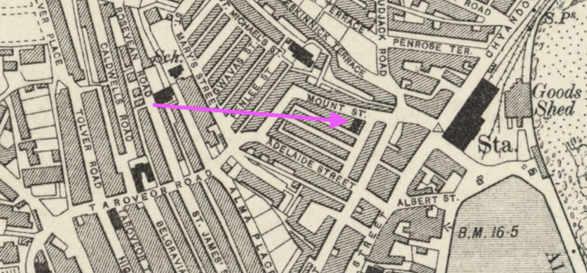
This Profile of (Penzance) Mount Street Primitive Methodist Chapel has been compiled by Suzanne Trythall.
1820s: The first meeting place of the Primitive Society was in a small dilapidated schoolroom in Market Jew Street. They then moved to a schoolroom in South Parade. The Wesleyans had built a chapel in Queen Street and the Primitive Methodists occupied this building after the Wesleyans had moved to their new chapel in Chapel Street. The Society could not afford the rent of £40 a year and moved to a schoolroom in North Street. The Queen Street Chapel was demolished in 1912 when the present Salvation Army citadel was built on the same site.
1830: membership 37
1839: Rev William Driffield and William Wigley obtained a plot of land in Mount Street and canvassed the town for money to build a chapel. Rev Driffield and Rev Samuel Wilshaw are recorded as labouring with their own hands to clear a place for the foundation stone. A considerable part had been built when money ran out and construction was halted. A friend lent £200 and work continued. The chapel was built at a cost of £257 and the Sunday School was held in the chapel. It was opened by Mr B Bosence, carrying both the pulpit bible and his eldest daughter.
1847: end gallery erected to seat 70 people at cost of £47
1851: side galleries added and gas lighting installed
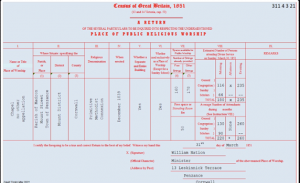 1851 Census of Places of Public Religious Worship – Return no: 311 4 3 21 transcribed by David Tonks. The Return was completed by Rev William Nation.
1851 Census of Places of Public Religious Worship – Return no: 311 4 3 21 transcribed by David Tonks. The Return was completed by Rev William Nation.
1856: chapel reopened after alterations which included extending the chapel, erecting a gallery round the new part, adding a schoolroom and vestries. 700 could be seated. Cost was nearly £300. The Sunday School had a library.
1857: chapel membership 150
1859: annual camp meeting began at 9am in the Green Market, then participants processed through the town to the camp ground. The day concluded with sermons and a lovefeast in the chapel.
October 1873: work commenced on building the new Sunday School. There were two rooms, one with a stage. Two memorial stones were laid by W H Rodd of Leskinnick House and Mr B Bosence of Alverton. A bottle was placed in a cavity under the corner stone. It contained a list of trustees, a circuit plan, a Society ticket and four newspapers: Primitive Methodist, Cornish Telegraph, Templar and Temperance Star. People were then invited to lay donations towards the building fund on the stones and a little over £30 was collected. After several speeches and a tea meeting about £100 was either collected or promised.
Property adjoining the chapel had been purchased for £170 (freehold purchased later for £300)
Cost of building: £500
Architect: Mr Oliver Caldwell
Builders: Messrs Perkins and Caldwell
Masons: Messrs Nicholls and Colenso
1885: District meeting held in Penzance, sermons preached in the Green Market and a camp meeting held in the old Fairfield near the promenade. Camp meetings ended due to the First World War.
1886: a ‘massive’ two-day bazaar was held at The Central Hall Parade Street to reduce the ‘heavy’ debt of £800. The sum of £1612 had already been paid off. The Central Hall (1879) was originally the Octagon Baptist Chapel (1803). It was demolished 1964 and is now the DHSS building.
1886: membership 140.
1899: a new chapel was built, deemed necessary due to an increasing congregation and the ‘dilapidation and decay’ of the existing structure.
8 April: a valedictory service was held in the old chapel and the congregation met for almost a year in the Rechabite Hall, Taroveor Road
8 June: foundation stone laid by Alderman James Caldwell JP, donations on the day amounted to £84 10s 6d

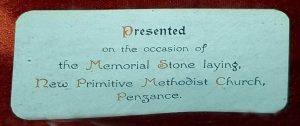 “This trowel and mallet is a family heirloom that has been passed down the family, but it can only be passed to a male Hocking.” (Photos: Jo Jo)
“This trowel and mallet is a family heirloom that has been passed down the family, but it can only be passed to a male Hocking.” (Photos: Jo Jo)
Two side walls were kept of the old chapel but lengthened by about 10 feet and heightened by 4 feet, the stonework was of granite and the interior woodwork was pitch pine with mahogany inserts on the gallery front and the pulpit. Two vestries were provided at the rear of the pulpit.
Mortgage of £700 taken out with Primitive Methodist Chapel Aid Association
Architect: Oliver Caldwell
Cost: £1,500
Builder: WH Tucker of Penzance
Organ: Hele & Co of Plymouth, using some parts from the existing organ
Stained glass: Fouracre & Watson of Plymouth
Seating: 500 persons
16 March 1900: at the opening ceremony the door to the new chapel was unlocked by William Adams JP of Birmingham, a noted supporter and benefactor of Primitive Methodism. Rev James Tristram officiated.
Rev Albert Pearson, minister in the Circuit 1915-1920, remembers the chapel three quarters full with Christian Endeavour, a preaching service and a thriving men’s group meeting midweek.
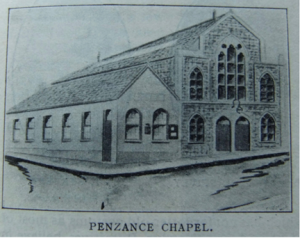 Drawing 1914: Christian Messenger
Drawing 1914: Christian Messenger
 Postcard undated: probably of a spring flower festival (collection of Rev Steve Wild)
Postcard undated: probably of a spring flower festival (collection of Rev Steve Wild)
1926: mortgage of £200 taken out with Primitive Methodist Chapel Aid Association for redecoration of the chapel
1931: loan of schoolroom to Mr Parr on Thursday evenings for practice of his glee singers
1932: became Mount Street Methodist Church; Penzance Primitive Methodist Circuit ceased to exist
1952: chapel membership 39 with 9 junior membership
1966: chapel membership 41, Sunday School 33 scholars
1968: Minutes of Trustees meeting of 24 July, signed by Rev Frederick Raine, unanimously endorsed the resolution ‘that in every respect the best interest i.e. God’s interests will be served by the closure of the Church at Mount Street’. The sale was put into the hands of Michael Prisk auctioneers.
1970: sale of chapel to Miss BV Fergusson for £2,500 freehold. It was to be used by Lunaspheres who produced globes of the moon.
Remaining funds, including a recent legacy of £200, amounted to £285 1s 3d. Circuit funds received £200 and the remainder went to Newlyn Centenary Chapel.
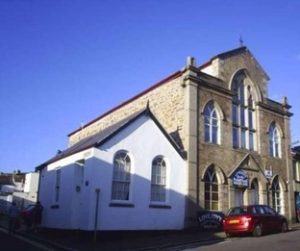 Photo 1990s: chapel as Lovejoy’s furniture store
Photo 1990s: chapel as Lovejoy’s furniture store
The chapel became Lovejoy’s furniture store and in 2000 was converted to four private leasehold apartments. The Sunday School is a separate dwelling ‘Chapel Cottage’ with the back half demolished to provide parking.
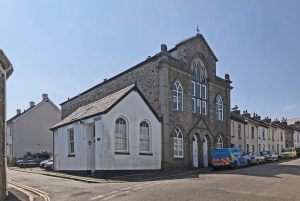 Photo: April 2021
Photo: April 2021
Sources and further reading:
Newspapers: The Cornishman and The Cornish Telegraph (Find My Past)
Magazines: Primitive Methodist and Christian Messenger
Books: ‘Even in This Place: 19th century Nonconformists & Life in the Borough of Penzance’ by John Horner (2010)
‘Primitive Methodism in Cornwall’ by J.C.C. Probert (1966)
Websites:
- My Primitive Methodists
- Cornish Stained Glass: Michael Swift
Map: The National Library of Scotland
Kresen Kernow
